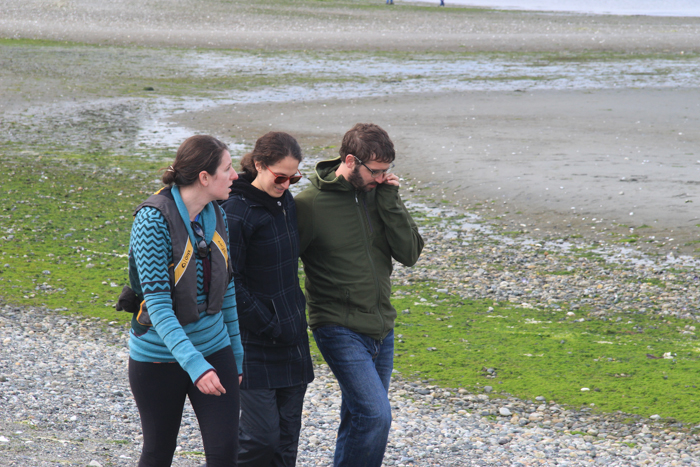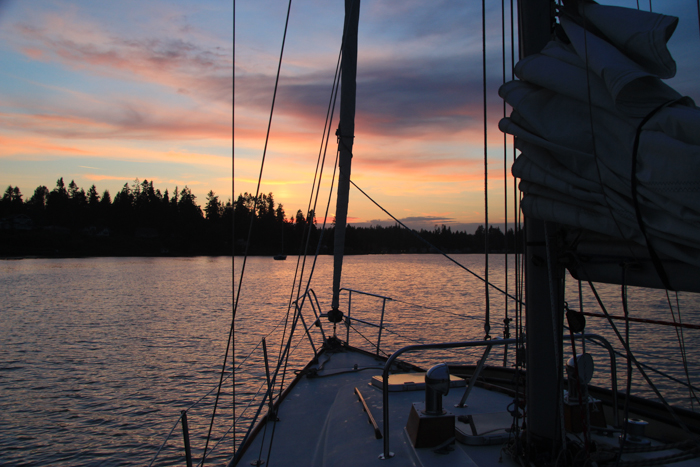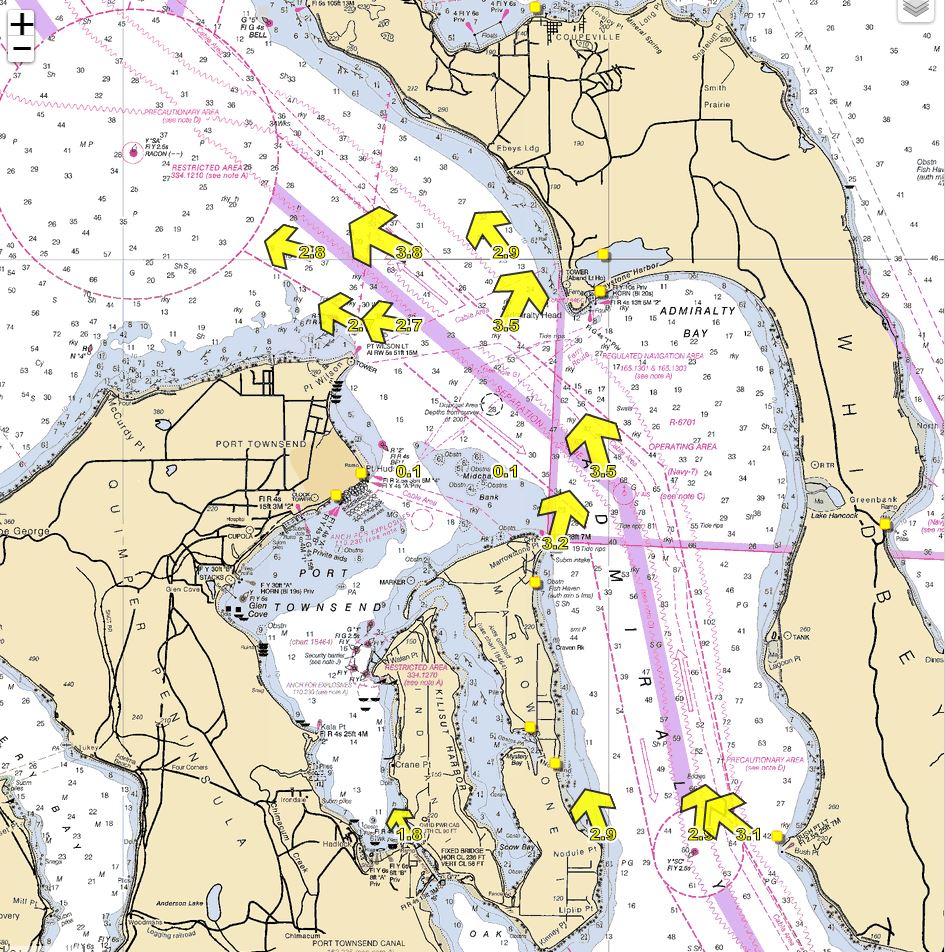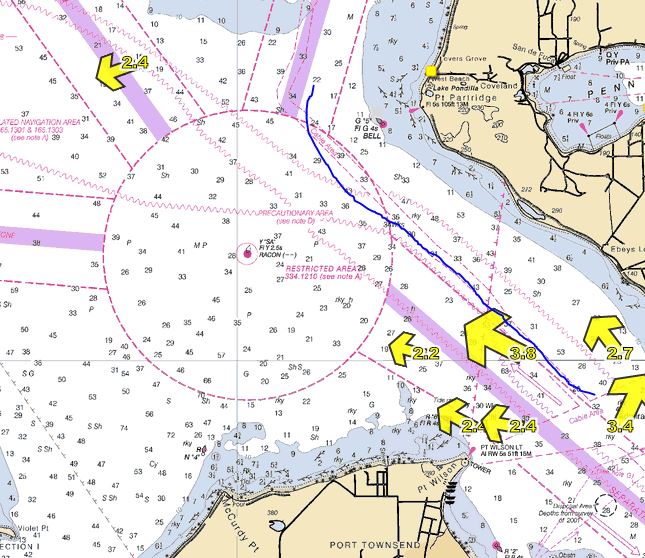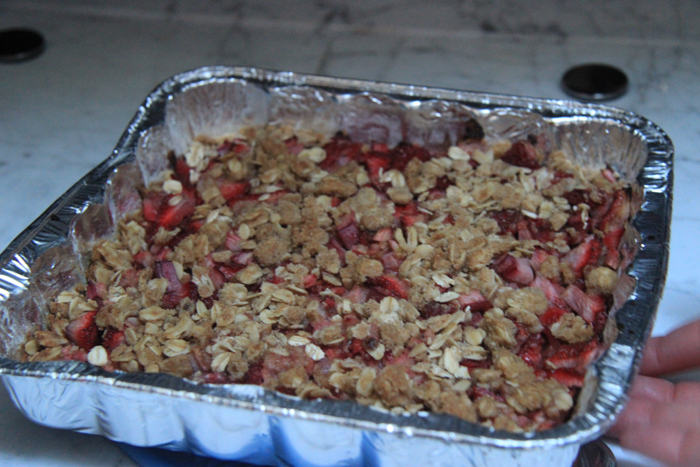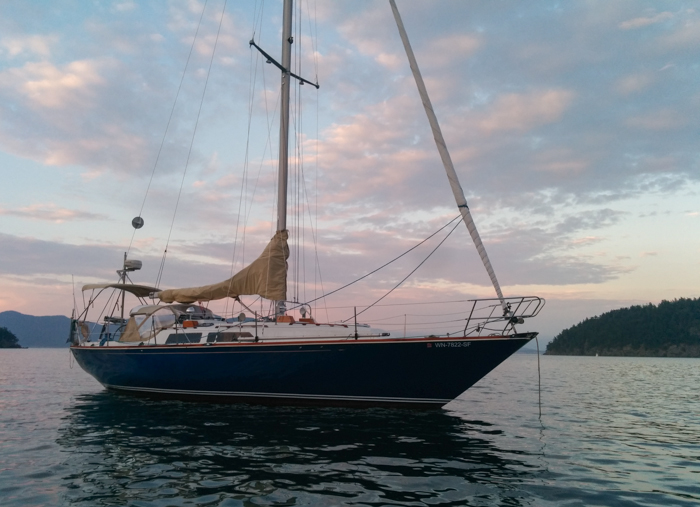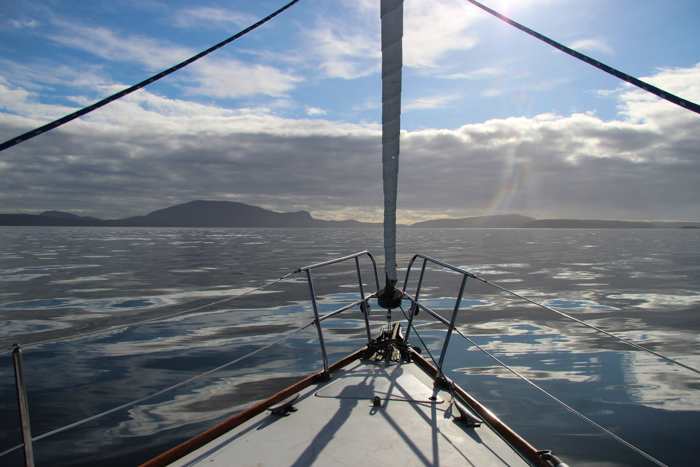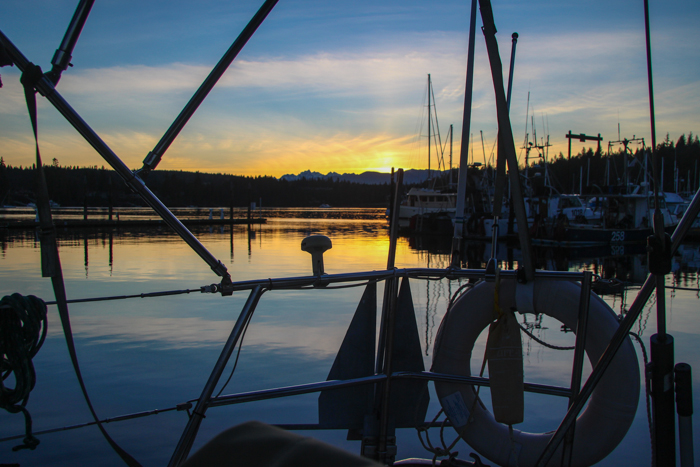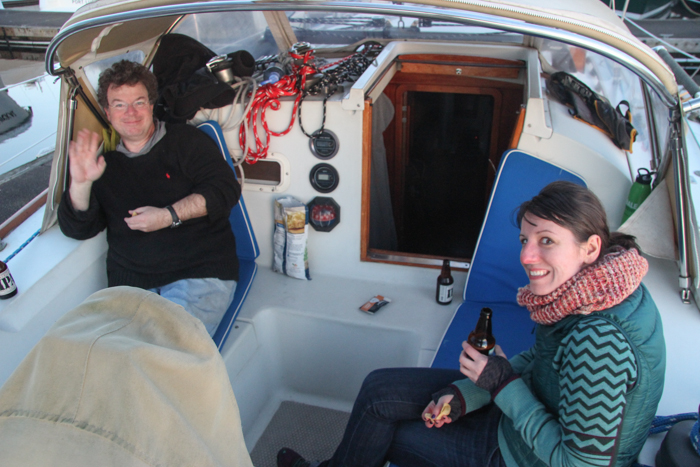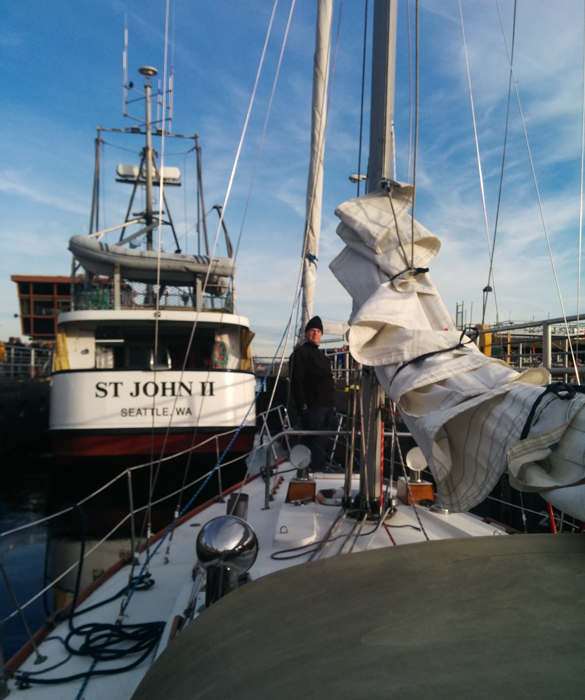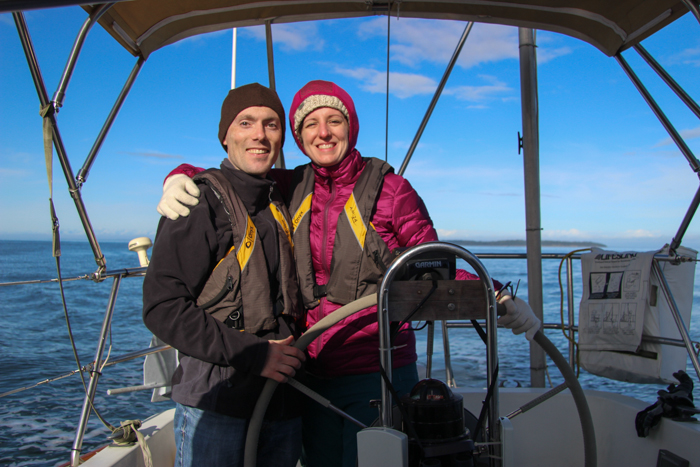Continued from Part 1 of the trip report.
Day 3 (Saturday) – Decatur Island to Spencer Spit
In the morning we set up our new PortaBote dinghy on deck, lowered it into the water with a very improvised and sketchy 3-point sling attached to the spinnaker halyard, and rowed ashore for a bit of exploring. We saw an eagle sitting in a tree only about 50 ft away above us, watching us closely.
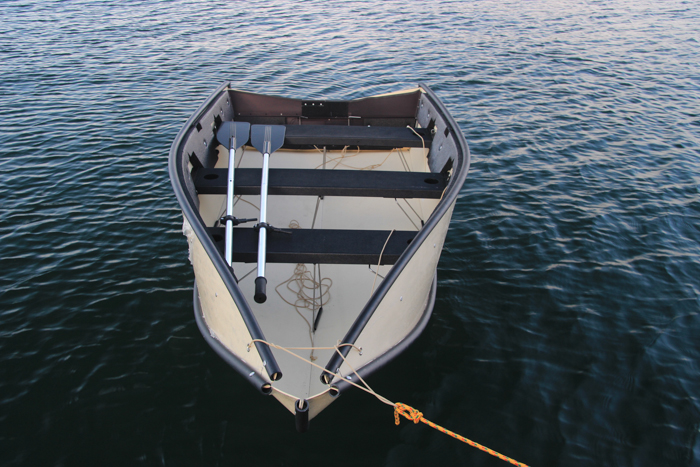
PortaBote successfully setup and in water

At some point, we noticed the toilet seemed clogged. The pump had a lot of resistance and wouldn’t pump anything out anymore. Unable to fix it, we had to switch over to peeing in a bucket.
The day was overcast with no wind, so we motored an hour over to Spencer Spit and snagged a mooring ball along the beach. This was also the closest place with restrooms, which we could use for #2’s. Since we had to dinghy in, we had to all get on the same schedule.

Peekaboo view of our boat while hiking above Spencer Spit
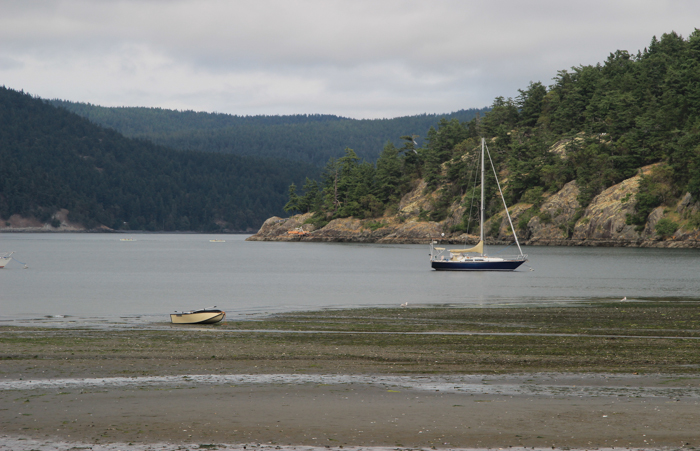
Both our sailboat and PortaBote dinghy visible in one shot! Low tide at Spencer Spit.
Day 4 (Sunday) – Lopez Island to Port Townsend
Spencer Spit is pretty exposed to the south since only a low beach protects the anchorage, and we had a nice south breeze picking up in the morning. So we were able to sail off our mooring ball (first time doing that!) without turning on the motor – just raised the main, slipped the mooring line, unfurled the genoa, and sailed around the other two sailboats that were moored around us. As a true fan of sailing over motoring, the joy of taking off in the morning without the noise of the motor was pure fun!
We had a south current in Rosario Strait and a south wind (about 10 knots) so we headed out close hauled the whole way. Fortunately there were no tide rips or bad waves in the strait from the current opposing wind.
It was surprising how many sailboats out were choosing not to sail. With the good wind we were doing 6 knots and having a lot of fun. I can understand not wanting to sail upwind if you have to go a long way on a schedule, but we even saw some sailboats motoring downwind. If you’re not going to sail downwind, what did you get a sailboat for??
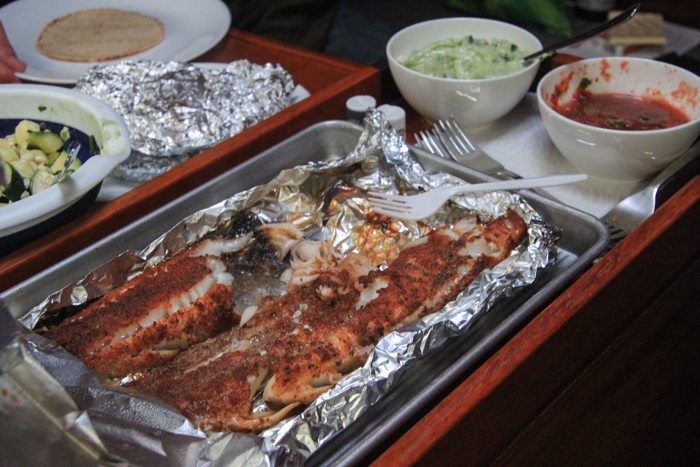
Delicious black cod and regular cod tacos for dinner
Day 5 (Monday) – Port Townsend to Seattle, with Orcas!
“I just saw a whale!” Micol shouted. I quickly looked to port and saw an unusual looking wave. “Are you sure it wasn’t just a wave?” we all said. “No it was definitely a whale” she replied. And then a minute later we all saw a big orca surface only a couple hundred feet from our boat (possibly within the 200 yard “no-go” zone for distance to orcas in Washington regulations – but we can’t help it if the orca approaches *us* first). We saw the solo orca surface a few more times heading south (near Edmonds). Later we saw 3 more orcas also heading south, around Kingston.
We had an informal race (the saying is that if two sailboats are going in the same direction, it’s automatically a race) with a Catalina 37 (being singlehanded) who happened to be going upwind on the same tacks only a bit ahead of us. We almost caught up, but he was able to point better. As much as I played with the trim, we had more speed but he could point higher. I blame it on our 10-year old cruiser sails.
Going back through the Ballard Locks was stressful as usual. With the holiday weekend there were dozens of boats going through the locks. We were third or fourth to the line, but most of the motor boats arriving after us pushed their way to the front. The small locks opened but only 4 or 5 of the 15 boats waiting could fit. The large locks was closed and already processing a large group of boats, so we had close to an hour wait.
In the end it worked out fine though. I’m gradually learning the intricacies of the locks – like how most boats use the railroad bridge as a current shield, sitting behind the bridge trestle where the current is less strong. And once past the railroad bridge, sitting in the lower current zone closer to the small locks.

In the large locks rafted to a very big motor boat

